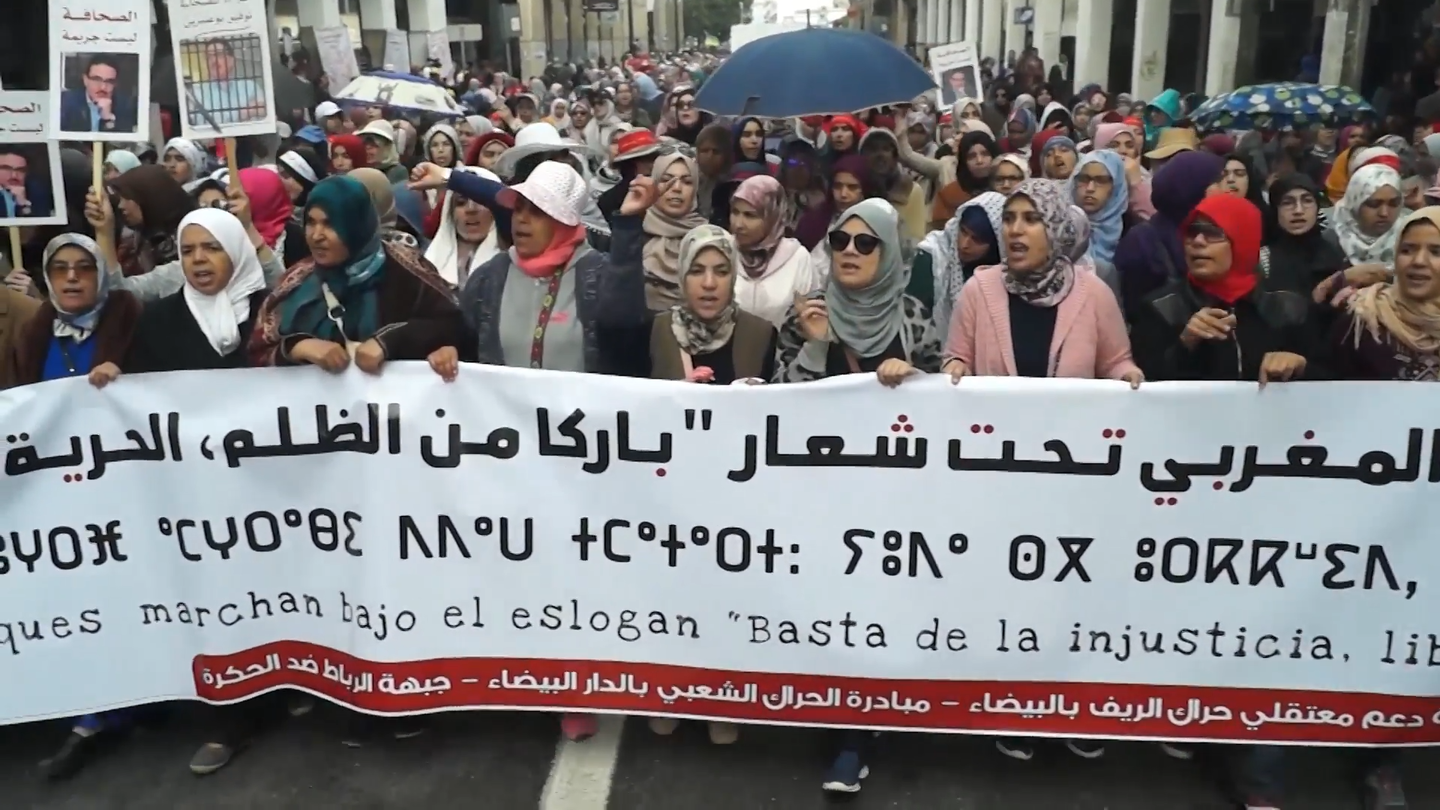Thousands of Moroccans protested in the capital city of Rabat on April 21, demanding the release of jailed activists who led the popular movement, ‘Hirak Rif’, in late 2016. The “March of the Moroccan people” was organized by political and civil rights groups, as well as the families of the detainees.
The activists, who were at the forefront of massive demonstrations against the Moroccan regime, were first sentenced in June 2018, when a Casablanca court charged them with “threatening national unity” and “undermining public order.” The movement’s leader, Nasser Zefzafi, and three other activists, Nabil Ahamjik, Ouassim Boustati and Samir Ighid, were given the harshest sentence of 20 years. In total, 53 activists were sentenced to a total jail term of 300 years. The people responded to the convictions with nationwide protests.
Early this April, an appeals court in Casablanca upheld the 2018 judgment, prompting the people to take to the streets once again.
Supporters of the movement gathered in front of the Moroccan parliament, carrying pictures of the jailed activists and chanting “Long live the Rif”, “The people want immediate release of Rif detainees” and “We are all Zefzafi”. They also demanded the release of journalist Hamid El-Mahdaoui who had covered the Rif protests. He received a three-year jail sentence on charges of not reporting a crime against state security.
Myriam Demnati, one of the protesters, told Al Jazeera, “These people have protested in the Rif region to ask for economic and social demands, and they have been imprisoned as if they were the worst terrorists and this we cannot accept. We are demanding their release.”
The Hirak Rif demonstrations erupted in the Rif region in October 2016 after the death of Mouhcine Fikri, a fishmonger, who was crushed inside a rubbish truck while trying to recover fish confiscated by the police. The death of Fikri was the last straw for the people, who were already angry at the corruption and repression unleashed by the regime, including unlawful arrests and police brutality. The economic woes of the people as a result of decades of neoliberal policies was another reason for the protest.
Thousands took to the streets, demanding state investment in the region’s development, concrete efforts to preserve its culture and checks to prevent abuse of power by the state apparatus.
The government responded violently, and more than 1,000 activists were arrested, including Zefzafi. He was subjected to “conditions tantamount to torture” in solitary confinement, according to Amnesty International. The authorities also clamped down on free speech by heavily censoring media coverage and arresting journalists like Mahdaoui.





